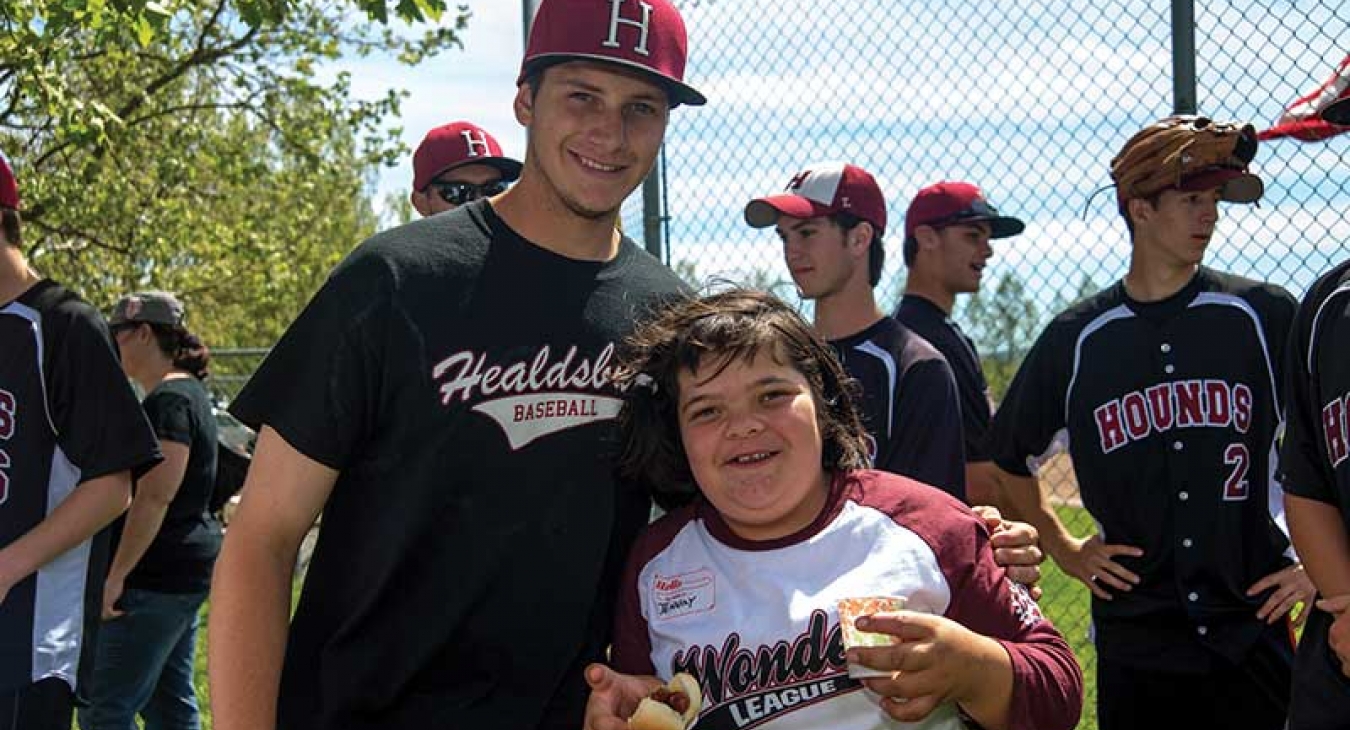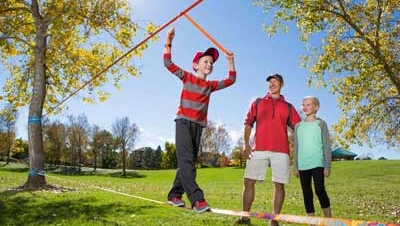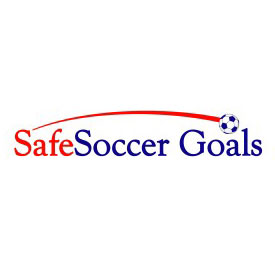Few would question the value of sports for kids, yet these days there are increased concerns being raised. Is intense competition necessary? What about head injuries? What’s the best age to join a league?
To fully understand the role of youth sports in the lives of kids we need to consider the natural course of child development. Growing up is rarely smooth and kids can show both very mature and infantile behaviors at the same time; however, it is possible to speak in broad terms of developmental stages. The literature in the field generally recognizes these stages: discovery, play, games, and sports.
Discovery
In one sense the discovery stage couldn’t be more obvious, it’s the child’s first encounter with something. The discovery process is so commonplace that we often fail to see its real significance. To understand the impact of discovery in development of children we need to look at the number of novel things that are available and the manner in which the child seeks to explore them. On the one hand the more new things there are available, the greater the child’s opportunities to learn.
If the goal is to realize the child’s full potential, this insight suggests that exposing children to as many types of sports as possible is important. It is also important that the child’s developmental stage is consistent with the situations and environments in which they are exploring.
Play
While the discovery phase allows the child to find out “what is this” – the play phase involves “what can I do with it.” Allowing children the maximum time possible to play has been shown to strongly correlate with functional intelligence, creativity, and psychological robustness.
To maximize play two conditions should be considered. The first is choice. As with the discovery phase the more variety of play opportunities, the better. But equally important, the ability of the child to choose what they want to play with and how they want to play is equally important. In my work with early childhood programs we found that conflicts between children where reduced to zero when there were at least three play options for every two children.
The second consideration for maximizing play is safety. This is a bit tricky since there is a tendency to make things “safe” by removing anything that might be “dangerous.” There are two problems with this approach. The first is that this safety-by-subtraction tends to reduce the play choices kids can make. The second is that adults can imagine millions of ways that kids could possibly be hurt and tend to go way overboard.
A better approach is to reduce the frequency and severity of accidents by removing hazards. A hazard is something the child can’t be expected to see, i.e. hypodermic needles buried in a sand box or an attack by a bully. This balance between functional and perceived safety is beautifully illustrated by adventure playgrounds which appear to adults to be full of danger, but because all of those challenges are easily visible to kids, these playgrounds have been shown to have fewer accidents than traditional playgrounds. In summary then the role of adults in maximizing play is insuring the most diverse environment possible while using their experience to identify and manage the hidden “mousetraps.”
Games
For purposes of this discussion I’m going to suggest that games can be defined as play behaviors that occur between two or more players. The child can discover and play alone but can only play a game with others (or an external device that functions as an “other”). That is to say that the main difference between play and games is that games are social.
Games appear very early in a child’s life. As soon as a child discovers that a behavior such as making a certain sound elicits a positive response from their caregiver, that vocalization will be repeated in a game-like fashion. From very simple interactions such as this, the child soon learns that various behaviors will initiate various responses. It does not take long for the child to begin to understand that there are underlying rules to these interactions. At a surprisingly early age they can begin to create “meta-games” where they begin to play with the rules of the games. For example when playing peekaboo, instead of just covering their eyes, they will drop out of sight, which they find hilarious.
The importance of this phase cannot be over empathized. Allowing the players to spontaneously evolve the rules of their playful games is the basis for learning fundamental social interaction. Children’s subtlety, creativity, and speed of rule generation and behavioral interaction is breathtaking. The more time children are allowed to play these spontaneous games, the more socially adroit, confident, and successful they will be.
Sports
The primary difference between sports and games is that the rules of sports are external, whereas in play the “rules” come from the children/players. Back in the early '70s when I first started doing Build Your Own Playground in San Francisco, a study was conducted at one of the schools where we had organized a volunteer-built play structure. This happened around the end of the Vietnam War, which brought an influx of Vietnamese students to San Francisco, and the School District wanted to learn how well they were integrating. The study looked primarily at girls and the dominant game they played was jump rope. Initially the study showed that the new students were playing well with other kids. Within a few weeks, however, the Vietnamese students were playing by themselves. Looking for the cause for this breakdown the researchers found that the Vietnamese girls would not play with the existing street-wise students because those girls kept changing the rules to the game. The local students were playing a meta-game and the newcomers were engaged in a fixed rule sport.
Cultural anthropologists often analyze the main sports a civilization plays to understand the values that civilization holds to be most important. For example, many cultures’ popular sports were highly competitive demonstrations of combat readiness. Within this category we find some cultures that valued honorable play very highly where others respected ruthlessness and success.
Some societies feel very strongly that its citizens should all closely follow the social norms while other communities are far more open. In regimented communities parents and other adults may feel pressured by their society to insure that the children in their care have incorporated the values that their culture prizes and thus can become quite assertive as they guide children into sports so they can learn the “rules.”
The Play Spectrum
To summarize the foregoing we can see that in the process of discovery and early play children learn about themselves as an internal process. At the next level children learn through games about interpersonal relationships, which are between people so they are external to the child. In sports children learn about the values of their society and culture and is a public process.
Another way we can explain this arch of developmental growth from simple discovery to sports is to put the process in the form of a story. Since many sports involve some sort of ball, let’s make Mr. Ball the protagonist of our story. In the first chapter Mr. Ball meets baby Bobby whose first interaction is to taste Mr. Ball, followed by picking him up and shaking. As soon as Bobby can sit up, he will have Mr. Ball rolling all about the house and not long after that, Mr. Ball will go flying across the room. While Bobby finds its fun to chase down Mr. Ball and roll him again, it is even more fun to have Mom roll him back, and thus the games begin. Bobby soon learns that Mr. Ball cannot only be thrown but also can be caught and hit. The final chapter finds Bob and Ball at the stadium playing against another team.
Too Young for Sports?
This description of the developmental sequence of play, while painted with an admittedly broad brush, gives us a basis to consider what is the appropriate age to introduce kids to sports.
The proposition advanced here is that discovery, play, and games establish the self-knowledge and interpersonal relations that provide the context for understanding cultural and societal values. This notion suggests, therefore, that it makes sense to wait to expose kids to sports around the same time as we formally introduce them to other cultural norms. This sort of citizenship instruction includes learning about political participation and religious teachings as well as economic and reproductive responsibilities, etc. Of course these subjects routinely make up the grist of children’s stories and so are not news to kids when they encounter them as part of their coming of age instruction, which generally begins around 9 to 11 years of age. By this age kids are generally expected to be able to demonstrate practical and behavioral integration of these norms.
The reason we don’t ask children to fully integrate societal values earlier is that they do not have the experience to give them the appropriate context. A strong case can be made that formal instruction in sports before adolescence is premature for the same reason. What I am suggesting is that for younger children, ball games should remain games, that is, that the rules are flexible and player controlled and the games are played for fun rather than winning. Such playful games are about learning skills rather than achieving some performance criteria. Another way of saying this is that we should seriously consider whether it is appropriate for children below the age of 9 to have a coach, whether that trainer is instructing in religion, politics, or sports.
Vulnerability
Why do we love sports so much? We root for our team, sometimes for decades, even when we know they have little chance of winning a championship. While success is important to our engagement with our home team, failure can be even more important. We don’t just cheer for the team; we also closely follow the performance of particular players. We become familiar with their challenges, how they got into the game, how they deal with long stretches of poor performance, etc. The players’ stories merge with the saga of the team, and we identify with the character that emerges as they face adversity in a very public way.
What this illustrates is that unlike most other cultural phenomena, sports has a very unique quality – it is exceptionally public. This exposure creates a fertile environment for shame when expectations are not met. While some young children have the internal resources to deal with shame, many do not. Some families can provide support for kids who experience shame, but many do not.
There are millions of kids who dream of being the next great sports star, but the chances of their achieving such a lofty position are vanishingly small. Kids can clearly see that the predominant way we evaluate the quality of play is all about performance. We measure success in sports in wins, and kids are coached and drilled to emulate the same perfection we expect of professional players. Of course, good coaches and parents emphasize sportsmanship and focus on getting the best from each child rather than just winning, but when we are honest with ourselves and take a critical look at the totality that is the sports world, the predominate message is winning. And yet we know that the vast majority of players will not make that grade and so are set up for failure and hence shame.
Because we tend to view sports as a wholly beneficial activity, it is easy to underappreciate the impact on those who cannot, or choose not, to play. Yes, sports do build relationships and friendships. But non-participation can stigmatize and marginalize. This phenomenon only becomes a problem when sports participation comes to dominate the recreational options available to children.
Recognizing this issue, some youth sports programs try to insure that “every kid is a winner.” These programs can be effective but often the kids find them insufficient to compensate for their less than great performance on the field.
To reduce failure and shame youth sports should emphasize fun and camaraderie. With a bit of ingenuity it is entirely feasible to change the emphasis from winning to having fun. How would that look in actual practice? My Rotary Club has a program called the Wonder League. This is a series of weekend games that pairs kids with special needs with members of the community such as the local high school and semi-pro baseball clubs. The program really promotes inclusion of kids with special needs by allowing the athletes, who are often role models for other teens, to become comfortable with socializing with kids with special needs, and vice versa. The rules to Wonder League games are simple: every kid gets to hit and get on base, everybody scores. Everybody is engaged and everyone benefits.
My concern is that all too often parents, coaches, and recreation professionals tend to think that when they provide good sports facilities and programs, their job is done. We leave making time for play up to the kids, but in today’s high structured childhood there often is no time available for play. Parents hear “Mom, I’m bored” and quickly fill the void with “enriching” activities at best or passive entertainment at worse. It is hard to remember that kids have to get bored and stay bored long enough to begin to create real play for themselves.
As we push sports to younger and younger children, we run the risk of creating a generation who won’t know how to play. This phenomenon was first flagged twenty-five years ago by David Elkind in his pioneering book The Hurried Child. A mounting number of studies have verified and further expanded on this theme, and most child development specialists now acknowledge that many children suffer from a Play Deficit Disorder.
Balancing Sport and Play
In a recent article in the N.Y. Times the case was made that “Kids Need More Structured Playtime, Not Less.” As you would expect, there were strong reactions on both sides of this argument. I think this sort of decision is best left up to children’s caregivers, but I also know that the days of free play in alleys and vacant lots is largely a thing of the past. For today’s children there is a sense of urgency that they succeed on one hand and the fear of something bad happening on the other. These two concerns, largely unsupported by any actual facts, tend to combine to produce the overstructured and highly supervised lives of today’s kids. We can’t return to the days of just letting kids be kids, and we have to make some conscious efforts to adjust to the new realities.
There are many ways we can enhance the benefits of, and access to, play while maintaining plenty of engagement with sports. When communities make investments in sports facilities and programming, they should also make sure that there are provisions for unstructured time and spaces where kids can play. For example, one way to do this is to put a challenging bouldering type of climbing wall next to a baseball field where the kids can get a demanding full body workout before or after their games. Even some small elements like a slack walk rope or chinning bars will be used to good effect.
In the home parents can provide unstructured loose parts like cardboard boxes, tape, and shears for some adventuresome play. This gives kids a starting point for self-directed play while also sending the message that such play, and the mess it may generate, are OK.
Making sure our children have plenty of time for play and not just sports is crucial. When we make creating a balance of play and sports for kids a priority, there are tons of ways that we can make that happen in our homes and in our communities.
Those of us who love sports and want our children to learn and enjoy sports have a responsibility that our passion does not rob children of their childhood.




















typo
Love the whole article! I think you mean developmental PERspective.
Would love to talk
Jay,
Wonderful article! I'm a movement enhancement coach in Connecticut. I discuss quite a bit on the Developmental approach and the Long Term Athletic Development model. I would love the opportunity to chat with you regarding the article and gain more insight. I can be reached at: [email protected]. I look forward to connecting.
Add new comment